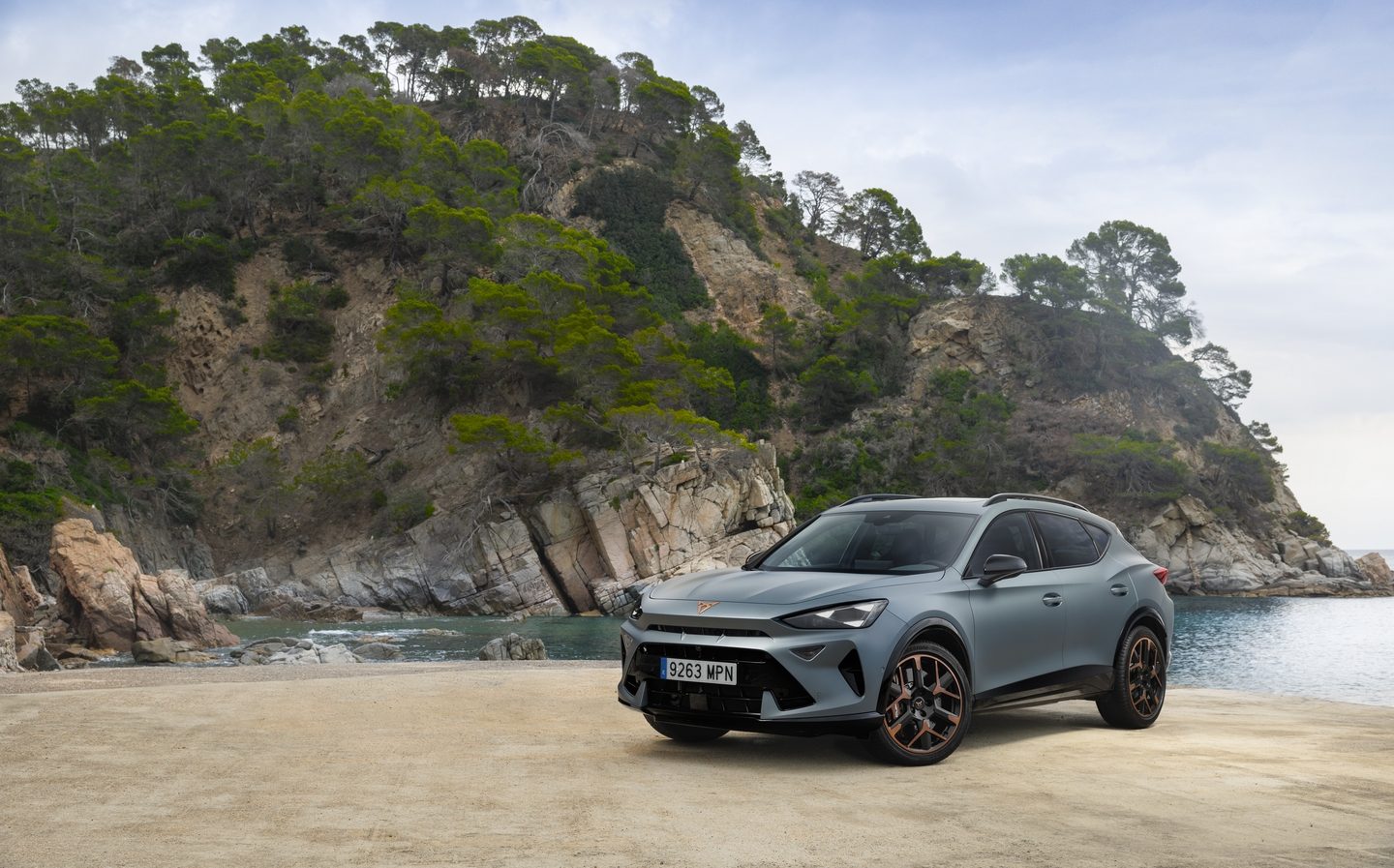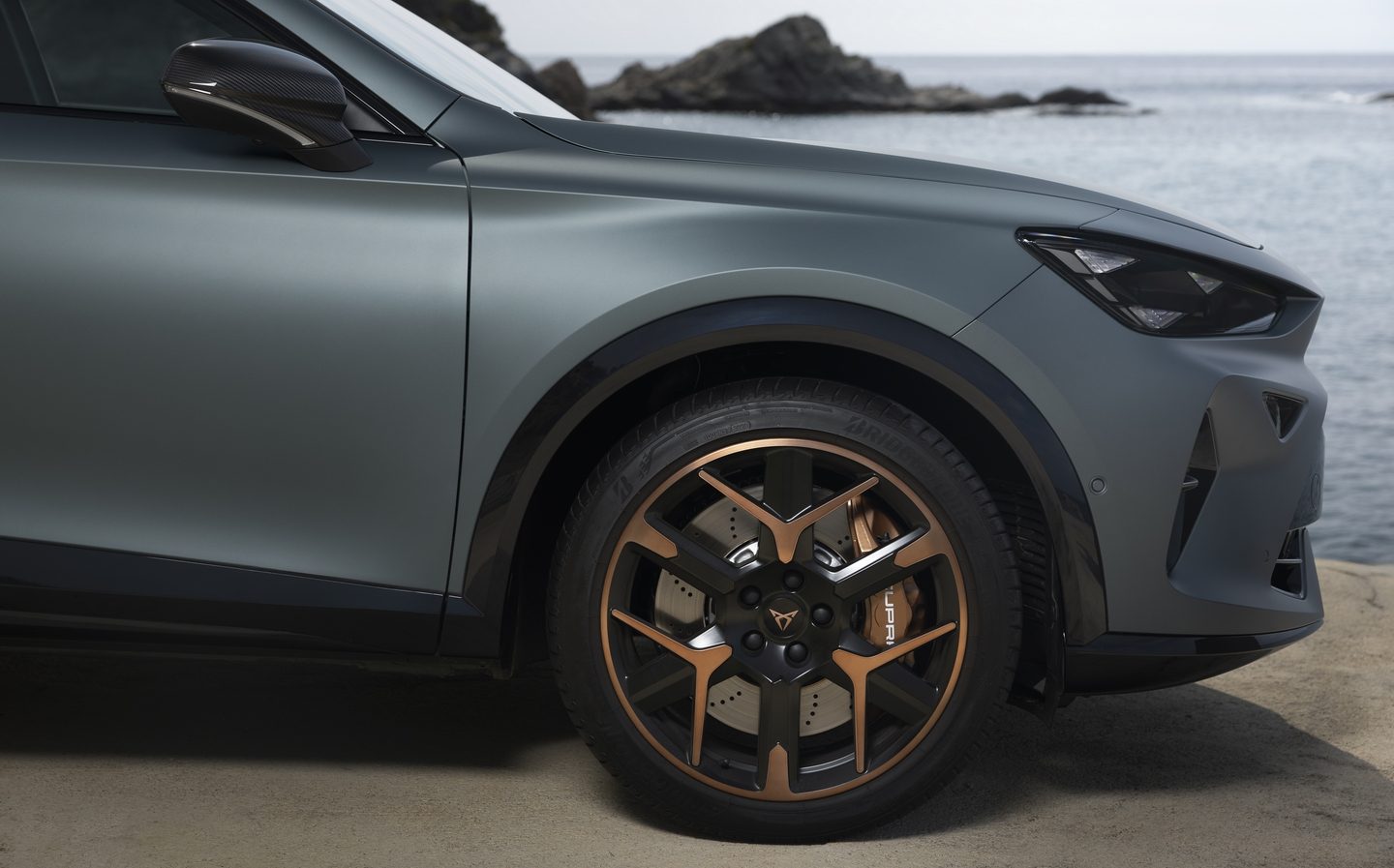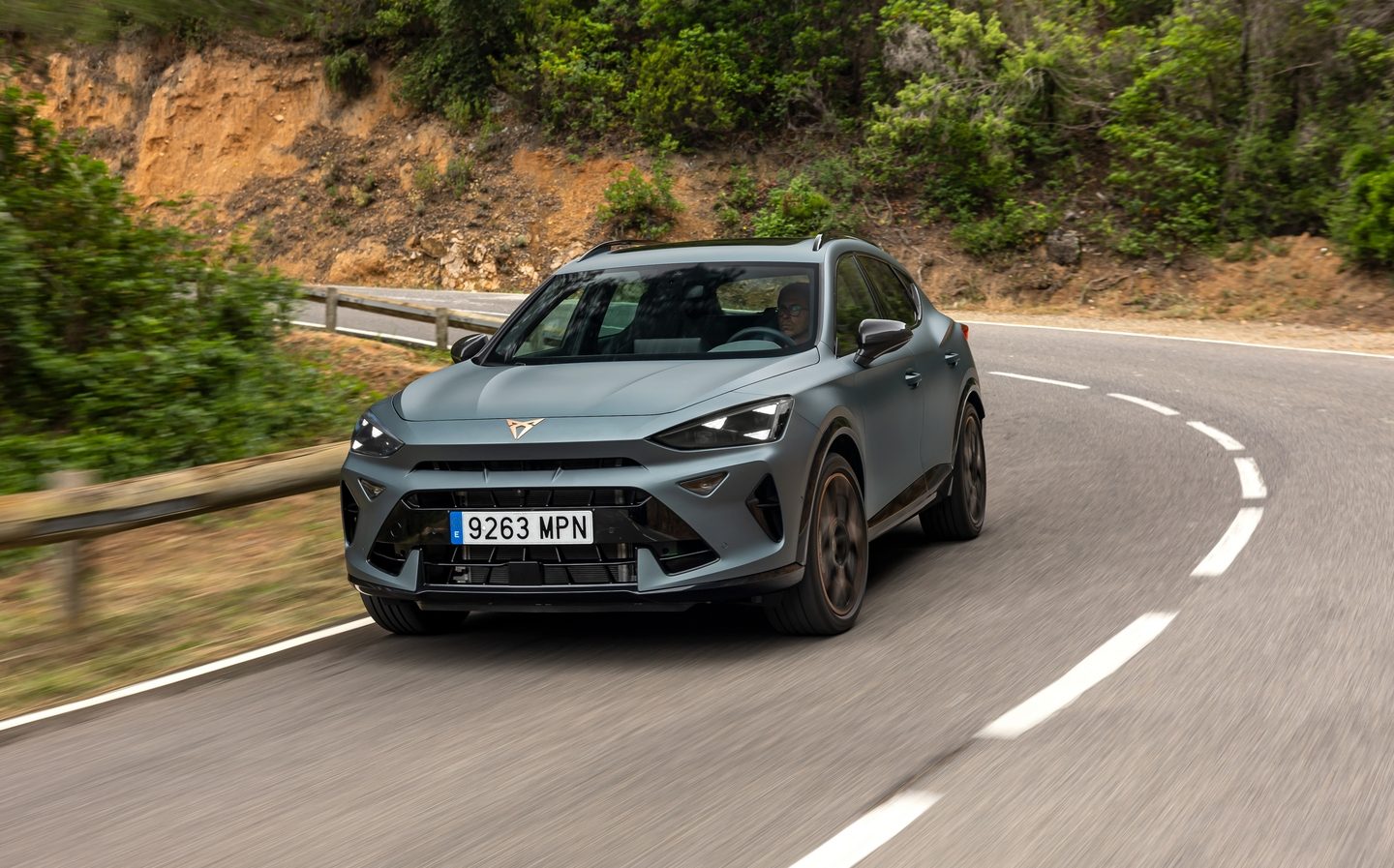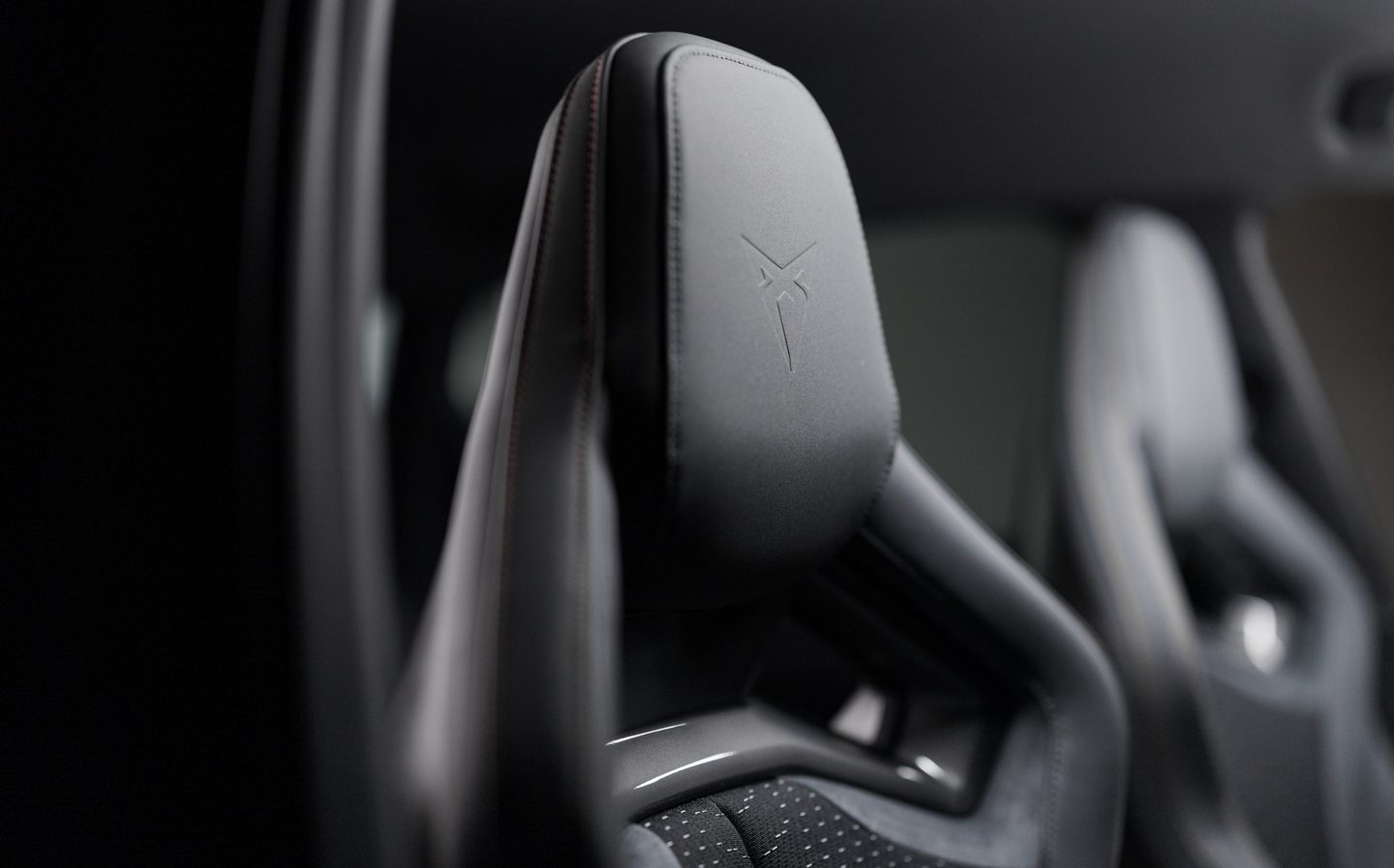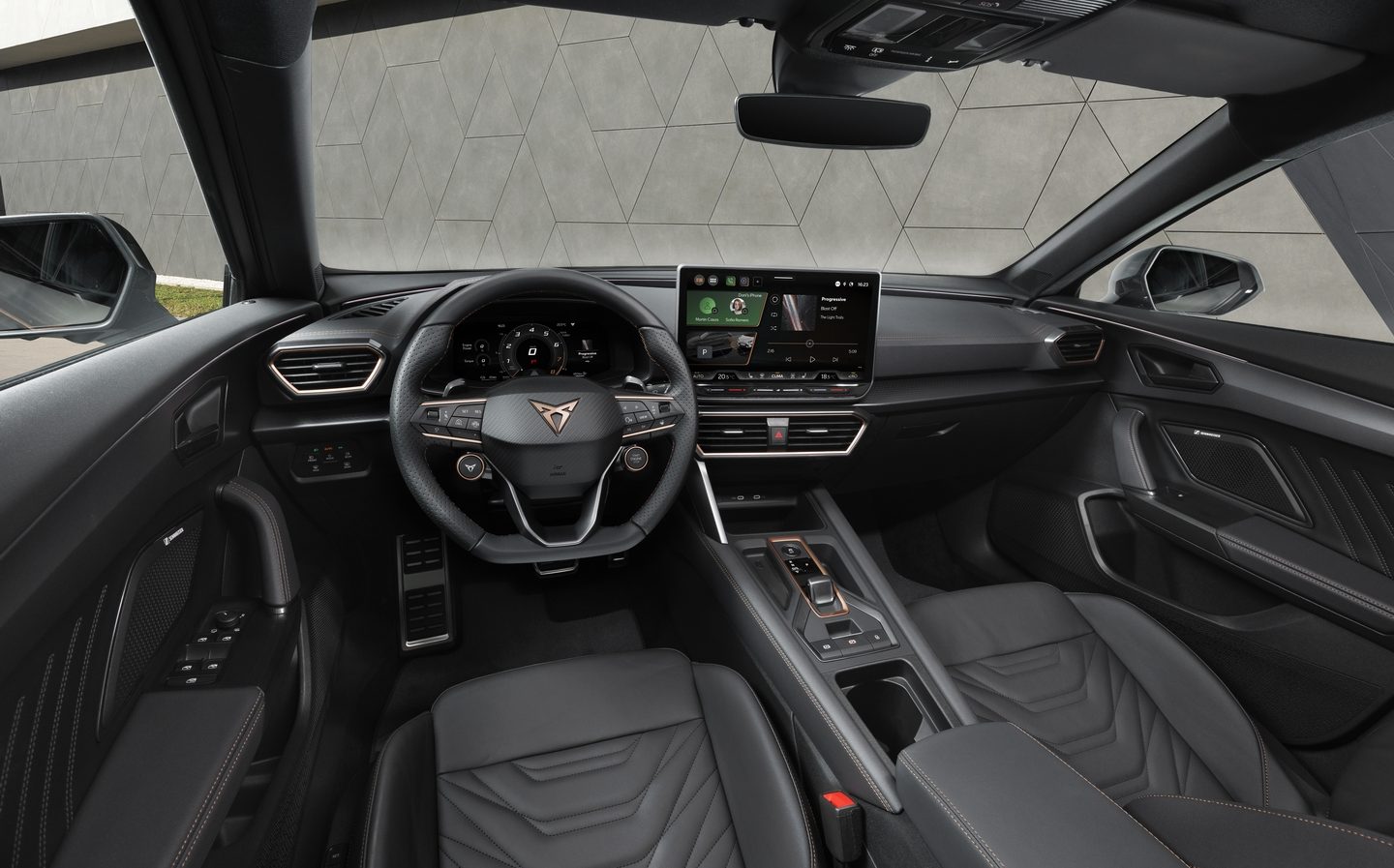Cupra Formentor 2024 review: Cool crossover remains stylish but is the brand's novelty value wearing off?
You get 329bhp in the flagship
We’ve always liked the Cupra Formentor. Ever since it arrived in 2020, the Spanish crossover has done things its own way, using the same basic building blocks as safe, humdrum fare such as the Volkswagen Tiguan yet somehow remixing them into a more appealing and engaging package.
For example, the Formentor is an SUV, ostensibly, but in terms of height it’s closer to Cupra’s Leon hatchback rather than the higher-riding Ateca.
Then it was the first Cupra that wasn’t also sold as a Seat, being its own, bespoke model for the sportier brand, rather than a heated-up version of a pre-existing vehicle from its sister brand. And you could even have it with petrol-blue leather within; natty.
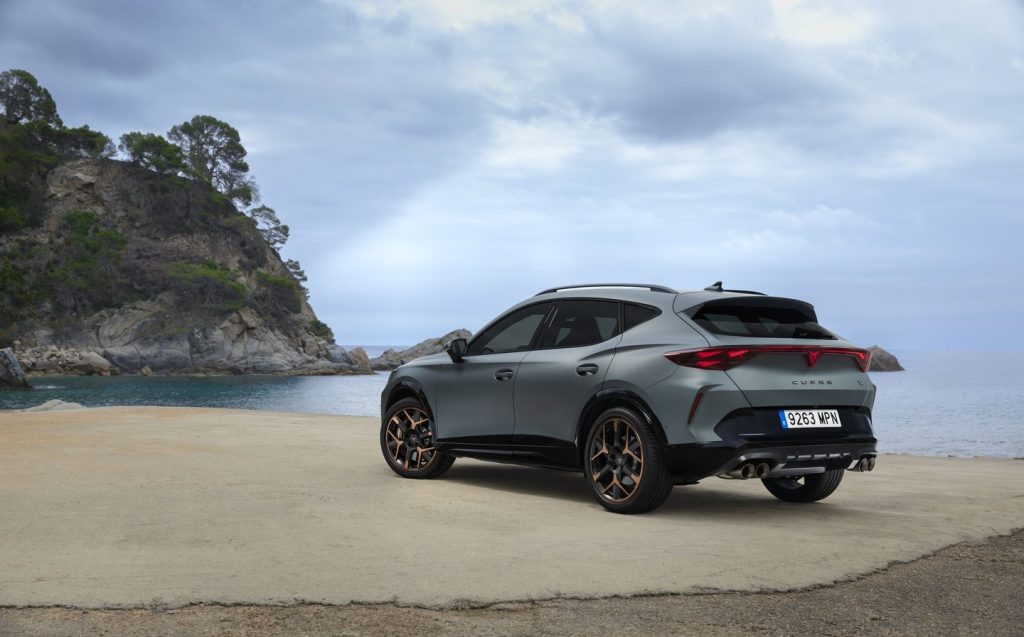
The thing is, though, Cupra as a manufacturer in its own right can no longer rely on the sheen of being a “new” marque to help it along. When the Formentor launched four years ago, punters on the street weren’t entirely clear what the distinctive tribal-logo badge on its radiator grille and rear stood for.
Yet today, there’s every chance that Cupra will supersede Seat as Spain’s only car manufacturer — the spin-off child has ostensibly killed its parent (although there’s some confusion over Seat’s long-term future following possibly ill-judged comments by Thomas Schäfer in September 2023).
Anyway, sales of Cupras are strong, particularly the Formentor, which is the company’s number-one performer globally. It shifted more than 120,000 units worldwide last year, and of course for the board of the company such a strong financial performance will be nothing but good news.
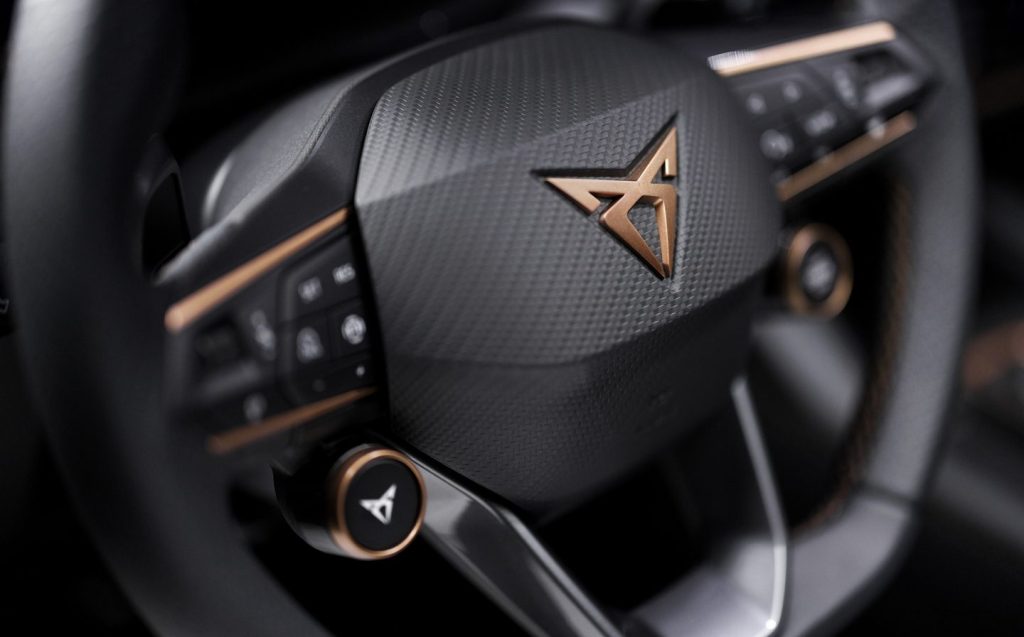
But it also means that Cupra is no longer a novelty in the minds of consumers, an unknown dark horse coming up on the rails. Instead, it’s a known quantity and there’s the suspicion that its older products, including the Formentor, no longer feel special and different as a result.
All of which means that it’s time for Cupra to refresh the Formentor and see if the car can once more garner the glowing critical acclaim it won four years back, now it’s into its 2024 model year guise.
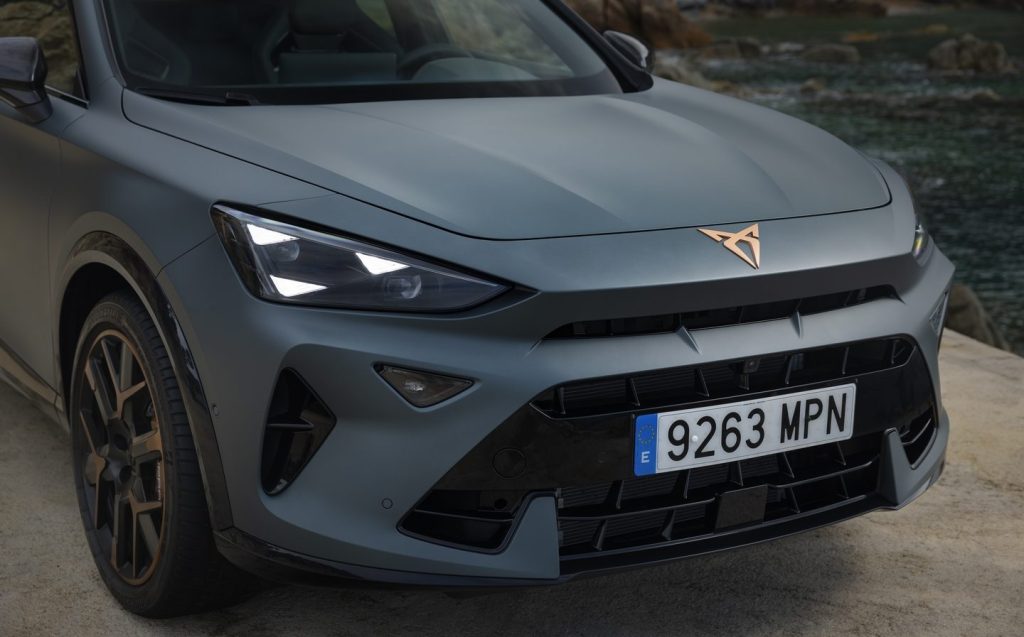
To be fair to Cupra, it hasn’t held back on the update work for the Formentor. The styling has seen a significant set of changes, including triangles-within-a-triangle lamp clusters fore and aft, the inclusion of a light-up boot badge in a full-width strip of illumination, and then what is termed the “shark nose” styling.
This has seen the old Formentor’s radiator grille deleted, in favour of a beakier, smoothed-off appearance that ties the Cupra crossover-coupé in more closely with the electric models in the manufacturer’s range — notably, the Born hatchback and the new Tavascan SUV.
You certainly can’t accuse Cupra of holding back, as the updated cars are so easily identifiable over what went before.
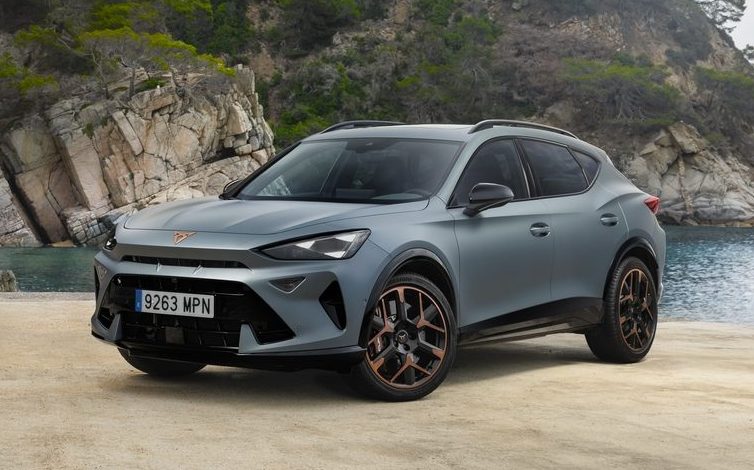
But, to some eyes (this writer included), the new appearance is possibly not as well-resolved as the older car’s. While there are part-electrified powertrains in the Formentor range, there is no pure-electric version and so its snub front-end styling seems to sit at odds with its internal-combustion cooling requirements.
Inside, it’s better news, as the high-quality cabin of the Formentor is preserved. The fascia looks great at first glance, with Cupra’s corporate colour copper used to highlight various features, and there’s still the angular architecture which makes the passenger compartment far more interesting to behold than a comparable Volkswagen or Audi.

Also, Cupra has addressed the old car’s main weakness, which was its slightly sub-par (but good for a VW Group model) infotainment system. There’s a new, 12.9in display dominating the dashboard now, which runs the more advanced “MIB4” operating system.
This has certainly improved the system’s graphical clarity, its rates of response and the intelligence of its menu layouts, but it remains the case that the climate controls are sequestered away in this screen and they’re not always easy nor intuitive to use when you’re driving.
That’s about where criticism of the interior starts and ends, save for pointing out a few less-than-magnificent material finishes on lower-mounted surfaces in the Formentor’s dashboard area.
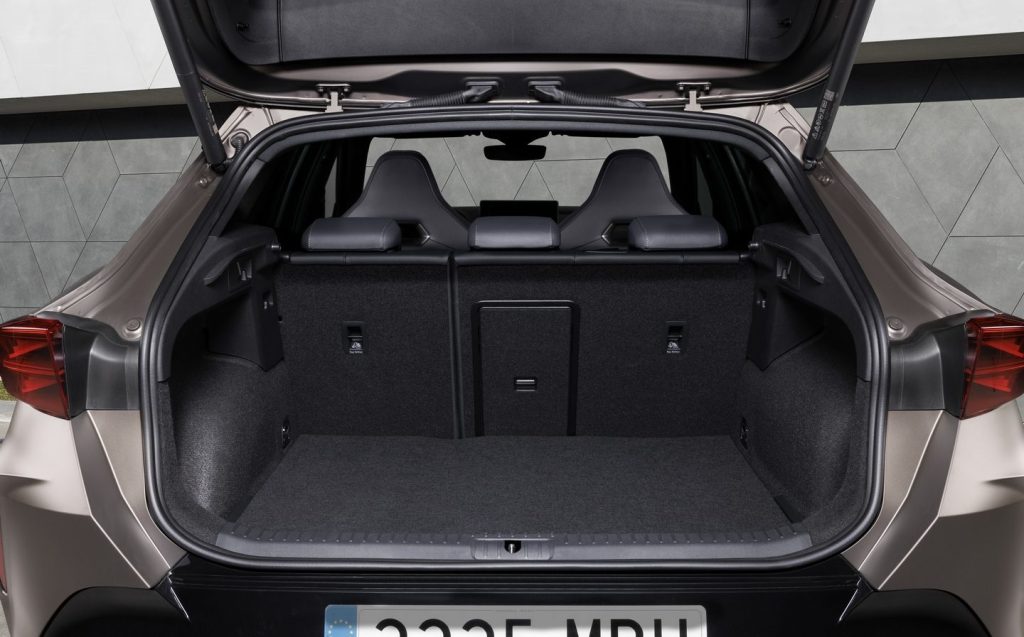
Otherwise, its updated digital instrument cluster is attractive and easy to read, while there’s good space for four adults. The boot’s decent as well, as it measures anything up to 450 litres; for this four-wheel-drive range-topper, you get a marginally reduced 420 litres.
Watch out for the plug-in hybrid models, though, badged “eHybrid”, as they drop to 345 litres due to the placement of the battery under the boot floor.
Speaking of which, the drivetrains largely carry over as before, with petrol, mild hybrid and plug-in hybrid options on the table.
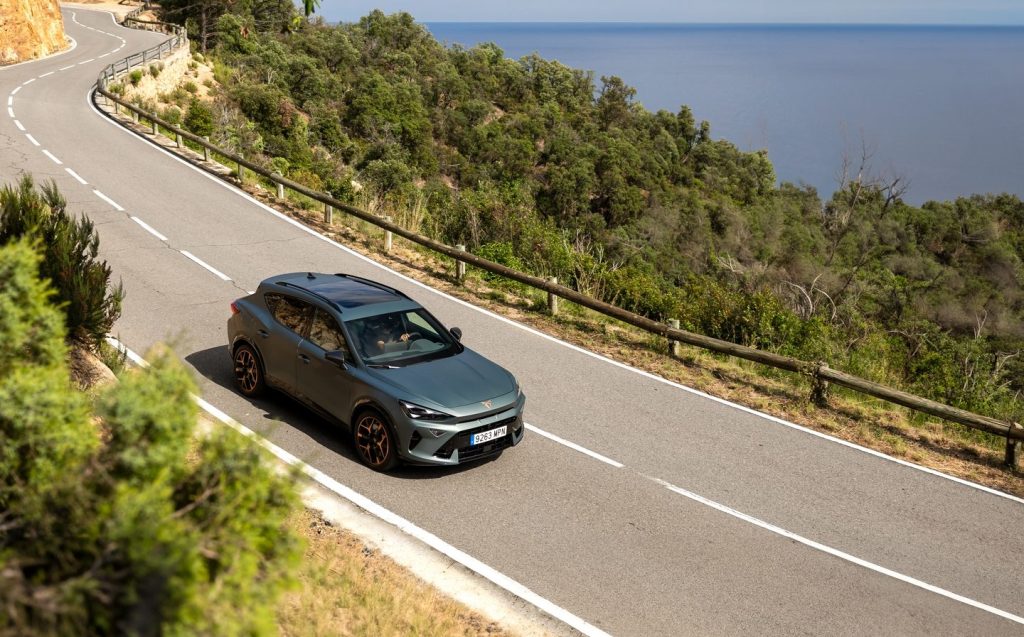
Things kick off with a 1.5-litre turbocharged petrol engine, which is non-mild-hybrid as a manual and fitted with 48-volt fuel-saving tech as an automatic, in both instances producing up to 148bhp.
There are then two plug-in hybrids (PHEVs) under the eHybrid banner, both of which have been blessed with larger 19.7kWh battery packs (that’s the usable energy figure) that theoretically increase their electric driving range to 62 miles.
That results in some outlandish on-paper economy and CO2 stats, but ignoring those there will be real-world benefits to this newer, larger power source that will result in lower benefit-in-kind taxes for business users and a crossover which will genuinely go for a lot longer on its electric power alone – even if it might not achieve 62 miles in practice.
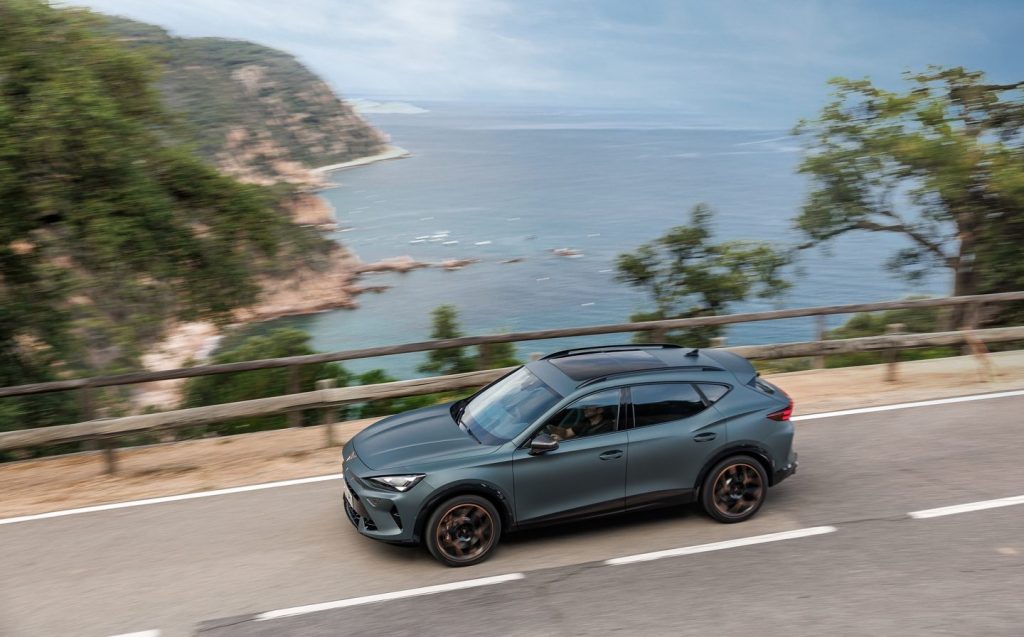
The eHybrids also switch from an older 1.4-litre petrol engine previously to the same 1.5 as found in the mild-hybrid Formentors. And, as before, there are two PHEV output levels offered.
The entry point, with up to 201bhp, has the same power as it did prior to the facelift. But the more potent derivative has been enhanced to 268bhp, an increase from the 242bhp in the older Formentor PHEV.
However, the main headline is reserved for this 2-litre petrol range-topper. Called the Formentor 333 TSI due to its metric power output, it is essentially fitted with the same drivetrain and torque-vectoring (able to split power to either back wheel) rear axle as the high-performance Audi S3 and Volkswagen Golf R.

That means a heady 329bhp, with up to 310lb ft of torque (twisting force). And, while the competition has caught up with the hottest Formentor since its arrival in 2020 — meaning this updated car isn’t quite as gobsmacking today as its predecessor felt back then — it nevertheless remains one of the sweeter-driving crossovers or SUVs of any size or price.
What the Formentor 333 TSI does so well is blend comfortable, refined daily driving manners with the sharp feel and impressive body control of a talented hot hatch.
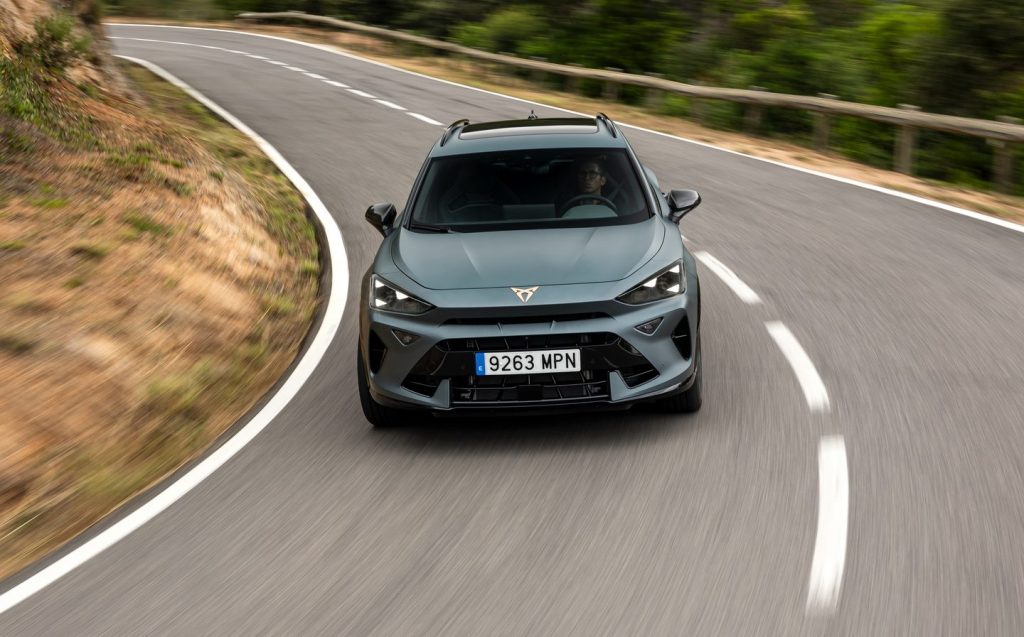
You can thank its relatively low centre of gravity for that, the car-like roofline bringing benefits related to dynamic acuity, if perhaps not satisfying those who want the highest hip point for easier entry and exit to the cabin.
But the Formentor grips hard, exploits its immense power effectively through the traction of the 4Drive all-wheel-drive system, and has a super-slick seven-speed DSG automatic gearbox that changes gears in a near-instant. Throw in taut body control, and it all adds up to a deeply talented machine.
Albeit one with a few foibles. The Formentor admirably restrains wind and tyre noise from entering the cabin, where they might upset occupants’ ears, so the rolling refinement is high.
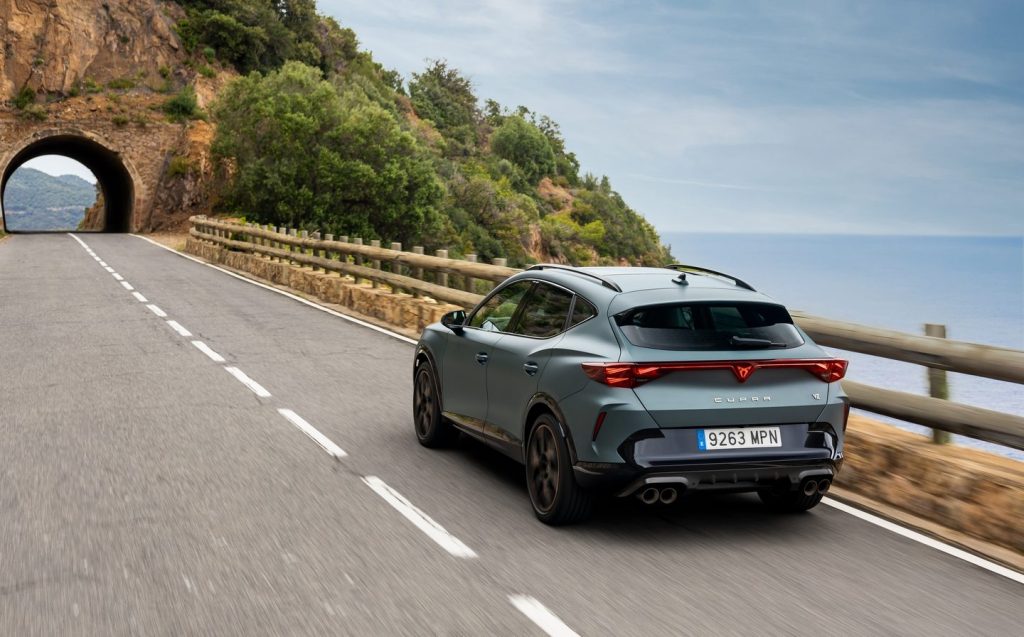
Yet the sporty nature of not just this car but Cupra as a whole means the ride quality always has an underlying firmness to it that never quite goes away. This is true even of this range-topper, which gains 15-setting Dynamic Chassis Control (DCC) adjustable dampers as standard.
So, while it never thumps and crashes appallingly over broken tarmac, neither does the Formentor ever quite attain the glassy-smooth ride quality of what is, at the end of the day, a family-focused crossover.
We also, during one spirited drive on a closed section of road, experienced quite a lot of jerkiness when it was changing gears in its most ferocious Cupra drive mode, while on more than one occasion the gearbox refused a perfectly reasonable downshift request from its driver via the steering-wheel paddles.
It’s also not the most tuneful performance SUV we’ve ever heard, although there is an optional Akrapovič exhaust system to give a little more aural character to the 329bhp Cupra.
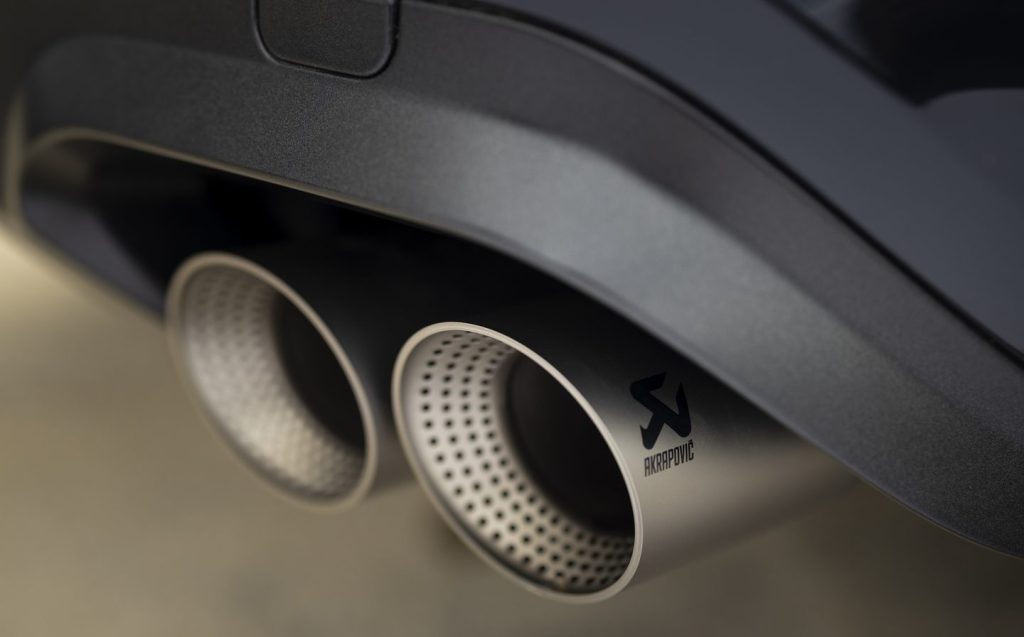
Despite this, the Formentor remains bloody good fun to drive on the right roads, without being intolerable for daily duties.
However, we find ourselves loving it just a little less this time around than we did when it burst onto the scene in 2020. Since then, we’ve always extolled the virtues of this unusual outlier of a car, which took tried-and-tested Volkswagen Group components and managed to assemble a coupé-crossover that was demonstrably more than the sum of its parts.
Nowadays, it’s an exceptionally good vehicle but not one that feels an awful lot different to drive than a Volkswagen Tiguan R, for example.
Maybe it’s the unusual new look that has put us off. Or maybe it’s the fact that it doesn’t seem quite the conspicuous bargain any longer; as tested, our Spanish example would broadly translate into a Cupra Formentor costing almost £50,000 here in the UK.
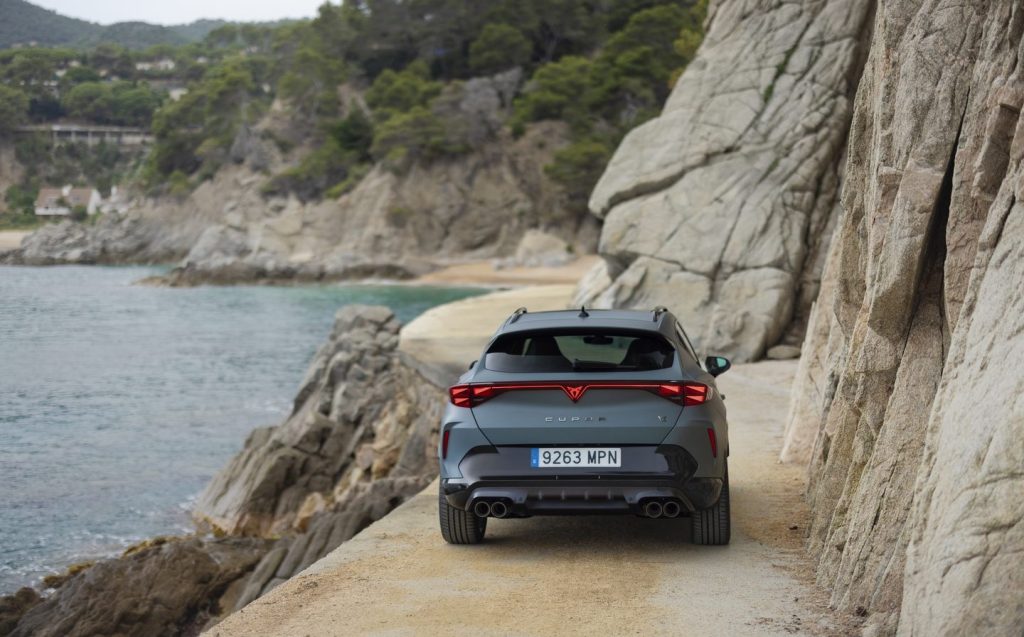
Or maybe, just maybe, it’s that the novelty value of Cupra has worn off.
But really, that shouldn’t detract from what a thoroughly capable and likeable crossover this thing is.
And if it continues to sell as well as it has done, or even performs better in global showrooms going forward, then Cupra will be delighted — and that would be job most emphatically done for this updated Formentor model.
Related articles
- If you found our review of the facelifted Cupra Formentor interesting, you might want to read about the other new Cupras coming down the line
- The updated Audi S3 features the same underpinnings as this Cupra
- Or read our review of the new Cupra Tavascan
Latest articles
- F1 2025 calendar and race reports: The new Formula One season as it happens
- Seven great automotive events to visit this summer, from F1 to art and champagne
- Watch new Porsche 911 GT3 smash Nürburgring record for manual cars
- Skoda Elroq 2025 review: Czech carmaker can’t seem to miss with its electric family cars
- Five best electric cars to buy in 2025
- Should I buy a diesel car in 2025?
- Zeekr 7X AWD 2025 review: A fast, spacious and high tech premium SUV — but someone call the chassis chief
- Denza Z9GT 2025 review: Flawed but sleek 1,062bhp shooting brake from BYD’s luxury arm
- Extended test: 2024 Renault Scenic E-Tech review





